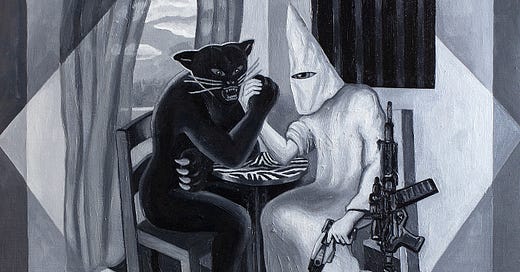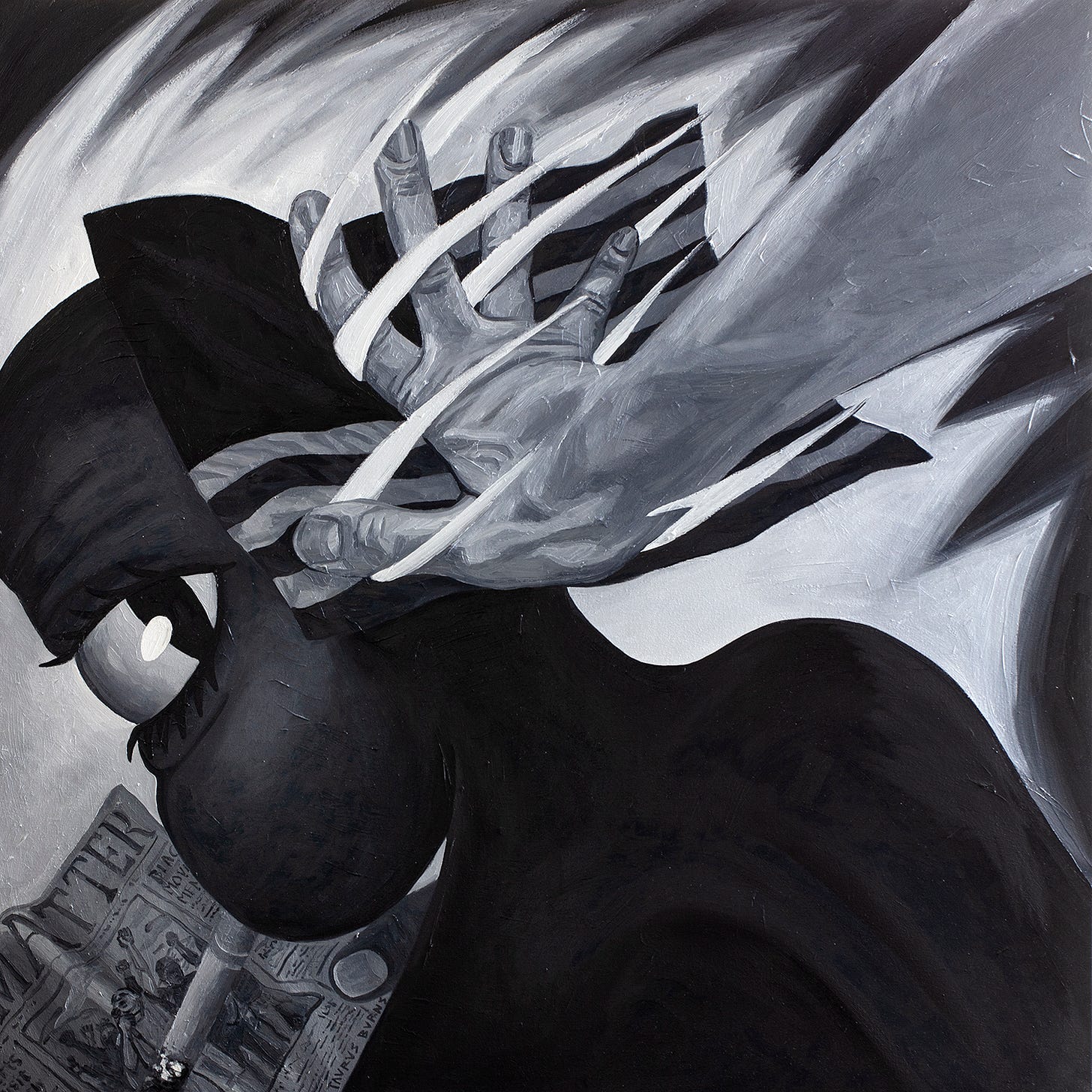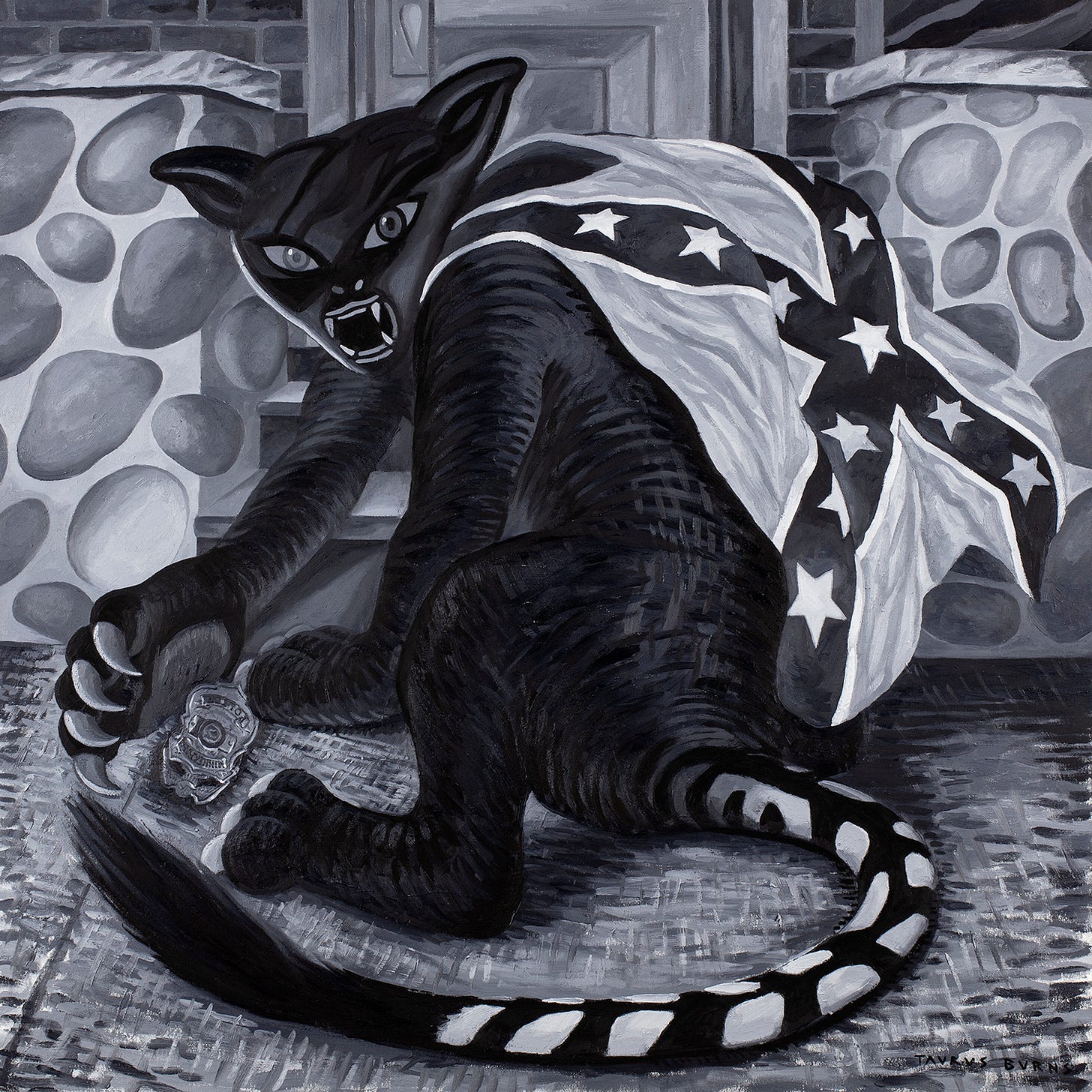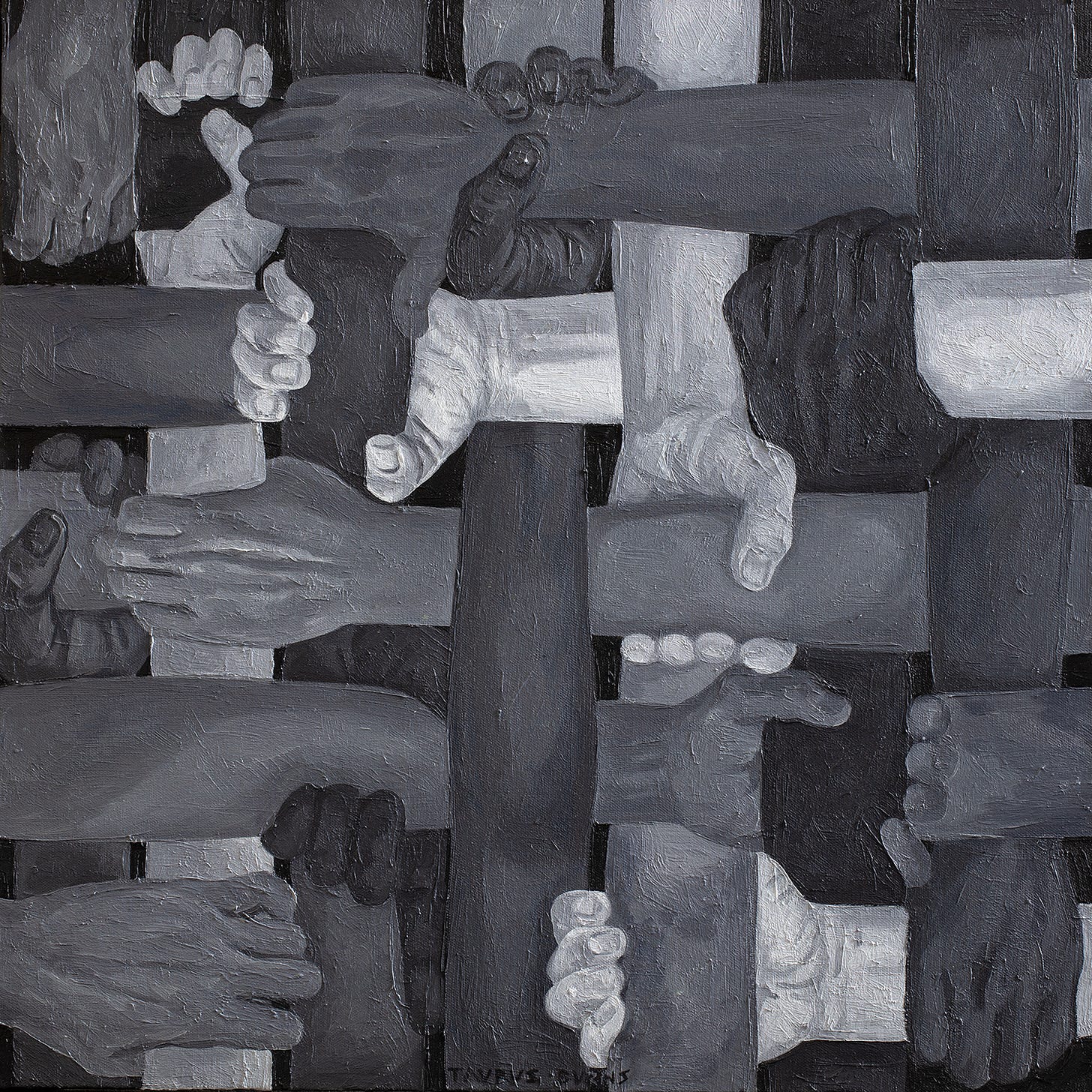“As the debate over how much of a problem systemic racism is in this country rages on, its impact on black and brown people continues, largely unnoticed by those who take a colorblind view of race in America. Every struggle for equality- whether through acts of peaceful protest or militant self-defense- has been met with violence, resistance and psychological defensiveness from a nation unwilling to extend the same human rights and privileges described in the Declaration of Independence to People of Color within these borders. In order for equality to truly exist in this great nation, the demand and work for it must come not from the Black community, but from the White one.” –Taurus Burns
Burns has been using the panther image, inspired by the Black Panther Party, in recent works. The Black Panther Party practiced open carry armed citizens' patrols, or colloquially “cop-watching”, to monitor the behavior of officers in California’s Oakland Police Department and challenge police brutality in the city. Layered geometric shapes activate this space where a highlighting diamond directs the viewer to a wrestling match with the apex of racism that, despite monumental effort to eradicate, is still rampant.
“Jingo: a person who is obsessively nationalist and professes his/her patriotism loudly and excessively. Nothing brings out a jingo quicker than Black people protesting against unfair treatment.”
Riffing on Phillip Guston’s work, Burns’ innocent, childlike character’s eye widens as the hand of violent oppression attempts to silence Black Lives Matter and any other commentary on anti-race discrimination.
“Inspired by the inspiring story of Fred Hampton- a revolutionary activist who became chairman of the Chicago Black Panther Party. Before his murder on December 4, 1969 at the age of 21, he made the unprecedented move of uniting the BPP, the white Young Patriots Organization and the Puertorican Young Lords in the formation of a Rainbow Coalition.”
Burns often paints his panther wearing the stripes of a zebra—a term sometimes used to describe children who have one Black and one White parent. The chosen palette represents this heritage as well as society’s divisiveness. Burns is a masterful storyteller able to easily communicate potent, confronting messages without relying on color for impact.
Burns’ discusses this piece in depth as well as overall themes contained in this exhibition in a Micro Artist Talk for paid subscribers. Upgrade to paid to access this talk as well as the Micro Talk archives.
Sheryll Cashin writes, “Interracial cooperation has always been a threat to white supremacy.” The weave of multi-racial arms and hands represents both controlling one’s emotions in order to survive as well as society’s resistance to letting go of antiquated racial inequities. It also reads as a hopeful image where integrating different types of fibers ultimately makes a basket far more resilient.
Growing up white in white suburbia, I was taught colorblindness. It was considered rude to acknowledge someone’s race, which meant everyone except white because white didn’t register as a race. This allowed white to continue separate from everyone else. Once I recognized White as a race, it changed everything. Through difficult and uncomfortable conversations with a few of my Black friends, I began to see beyond the obvious racism to subtle comments and defaults from White people who weren’t aware they were doing it, me included. Only through self-awareness can we improve, smash racist hierarchies and become a peaceful melting pot that is strengthened by its diversity.
“There must be a new consensus on understanding the role of race in defining the basic structure of our society.” –Michelle Alexander, The New Jim Crow: Mass Incarceration in the Age of Colorblindness
On view through March 18th at M Contemporary 205 E Nine Mile Ferndale
*images courtesy of the gallery, photo credit CJ Benninger
direct quote from gallery materials
SHOWS OPEN THIS WEEKEND






